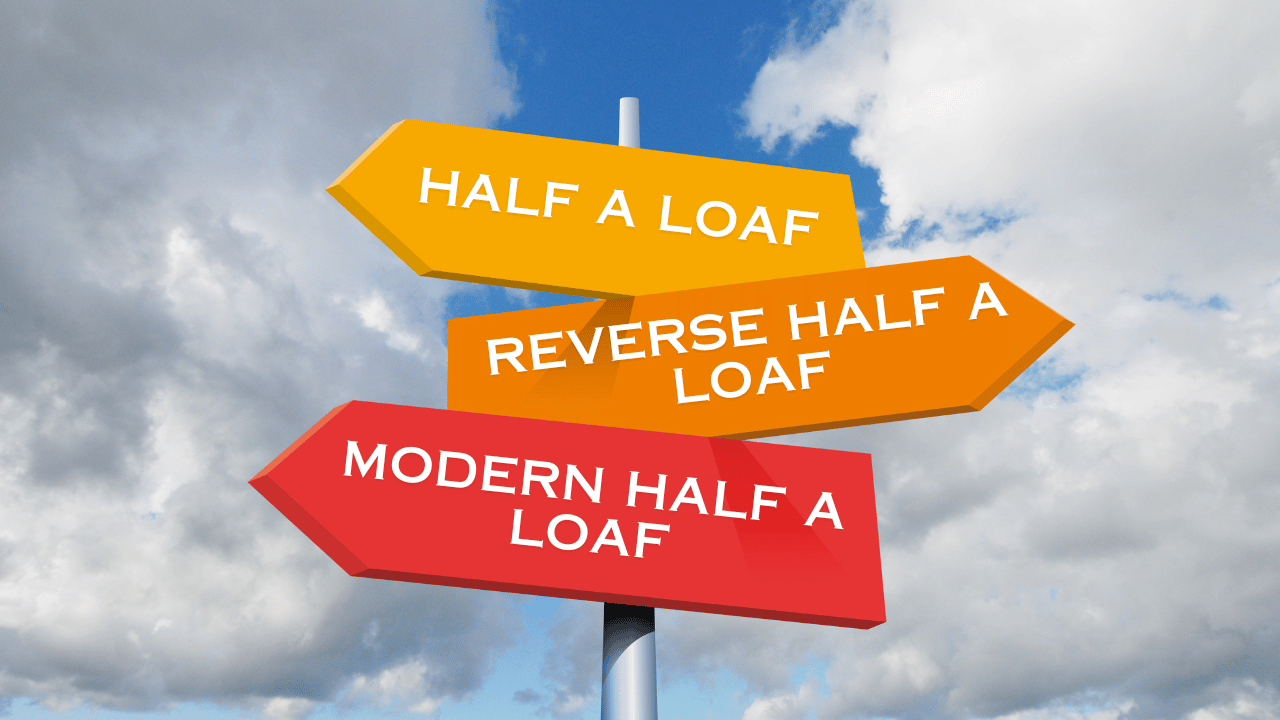“Half a Loaf” Planning: Strategies for Medicaid Eligibility
Feb 13, 2024
This blog post about Medicaid Planning by Michigan elder law attorney Nicole Wipp at the Family & Aging Law Center is not legal advice. It is for informational purposes only. Contact our office at (248)278-1511 for legal advice specific to your situation. We can help!
 medicaid planning
medicaid planning
What is Half a Loaf Planning In Michigan, And Who Is It For?
Half a loaf refers to the strategy of transferring assets to meet the eligibility requirements for Medicaid, without resorting to a full spend down.
This can involve giving away assets to family members, setting up trusts, or spending down one's assets on non-countable items such as home repairs or paying off debts.
The goal of half a loaf is to reduce one's assets to below the Medicaid eligibility limit, while still retaining some control over those assets. It is also to allow a family to legally retain assets over the spend down limits, so that further care can be provided to the individual in question.
While single Medicaid applicants most commonly use it, half-loaf planning can also be considered by married couples in second marriages who maintain separate assets, and couples where both spouses are in skilled nursing facilities and seek LTC Medicaid eligibility for both partners.
Half Loaf Planning Is Legally Permissible: But It Has To Be Done Right
As an elder law firm in Michigan, it has been one of my greatest sources of pride that our firm does an extensive amount of asset protection for our clients needing Medicaid benefits to pay for care.
Often, people are told they have to do a spend down. While this is true if you don't have the right legal advice, it isn't the full story. The bottom line is that there are legal ways to avoid nursing home costs, and avoid spending down. You just need the right strategies - and the right legal advice.
Get Medicaid Coverage And Cover Nursing Home Care Costs Today: Contact Us
We know what to do, and we can help. Contact our firm at (248)278-1511 today!
 loaf strategy
loaf strategy
Understanding Half a Loaf, Reverse Half a Loaf, and Modern Half a Loaf
When it comes to navigating the complexities of Medicaid, you may come across terms like "half a loaf," "reverse half a loaf," and "modern half a loaf." While these phrases may initially sound confusing, they refer to specific strategies that can be used when applying for Medicaid benefits.
What is Reverse Half a Loaf?
Reverse half a loaf is essentially the opposite of half a loaf.
Instead of reducing assets to qualify for Medicaid, reverse half a loaf involves acquiring additional assets to meet the eligibility requirements.
This can be achieved through various means, such as purchasing a burial plot, investing in non-countable assets, or converting countable assets into exempt assets. The idea behind reverse half a loaf is to increase one's assets without affecting one's eligibility for Medicaid.
What is Modern Half a Loaf?
Modern half a loaf is a relatively new strategy that combines elements of both traditional half a loaf and reverse half a loaf.
This approach involves transferring assets to a trust, which can be used for non-countable expenses or invested in exempt assets. The remaining assets are then spent down on countable items until the individual qualifies for Medicaid.
Modern half a loaf is often seen as a more ethical and transparent version of traditional half a loaf, as it allows individuals to retain some control over their assets while still qualifying and applying for Medicaid.
 nursing home care
nursing home care
Understanding Medicaid Compliant Annuities
A Medicaid-compliant annuity is a specialized financial product designed to help individuals qualify for Medicaid while protecting their assets. It involves purchasing an annuity with excess assets that would otherwise disqualify you from Medicaid eligibility.
With a Medicaid-compliant annuity, you can convert your excess assets into an income stream that is below the Medicaid eligibility threshold. This means you can still qualify for Medicaid benefits while preserving some of your assets for your spouse or heirs.
Why are These Strategies Necessary?
Many seniors and disabled individuals rely on Medicaid to cover their healthcare costs, particularly nursing home costs. However, the eligibility requirements are very strict and may disqualify individuals who have assets that go above the allowable limits.
This is where half a loaf comes into play - they allow individuals to qualify for Medicaid while still retaining some control over their assets. Many individuals would be left without access to much-needed healthcare services without these strategies, or would be left with little to no assets.
Can Half A Loaf Planning Be Used In Michigan?
Absolutely, yes! Our firm does many of these every month. The strategy we employ is based entirely on the individual's situation. No two are alike, which is why expert advice is necessary.
 medicaid penalty period
medicaid penalty period
Medicaid Planning With Half a Loaf Should Not Be Done Without Expert Advice
Half-loaf planning is a strategy for safeguarding assets that involves transferring a portion of a Medicaid applicant's resources to others. This transfer triggers a penalty, whereby the applicant becomes eligible for Medicaid but does not receive its benefits for a certain duration.
Meanwhile, the remaining resources are converted into income to cover care costs during this penalty period.
The primary objective is to generate a steady monthly income stream that lasts throughout the penalty period. When implemented correctly, this supplemental income ends when the penalty period concludes, resulting in the patient-pay amount being based solely on the applicant's regular income, without the additional income generated specifically to navigate the penalty period.
The specific amount of resources to be transferred depends on various factors, including the applicant's income, the cost of care, and any prior transfers. It's crucial to note that half-loaf planning is a complex process prone to errors if not handled properly.
It may also be challenging for MDHHS eligibility specialists to comprehend and accept. Therefore, planners must clearly understand divestment, penalty periods, and how to calculate the half-loaf approach.
Want more information about Michigan Medicaid Applications - read this article.
Our Firm Has a 100% Success Rate In Half Loaf Planning to Obtain Medicaid Benefits
We can't guarantee results, but our record stands for itself. Don't lose out on asset protection or benefits: contact us today! (248)278-1511
